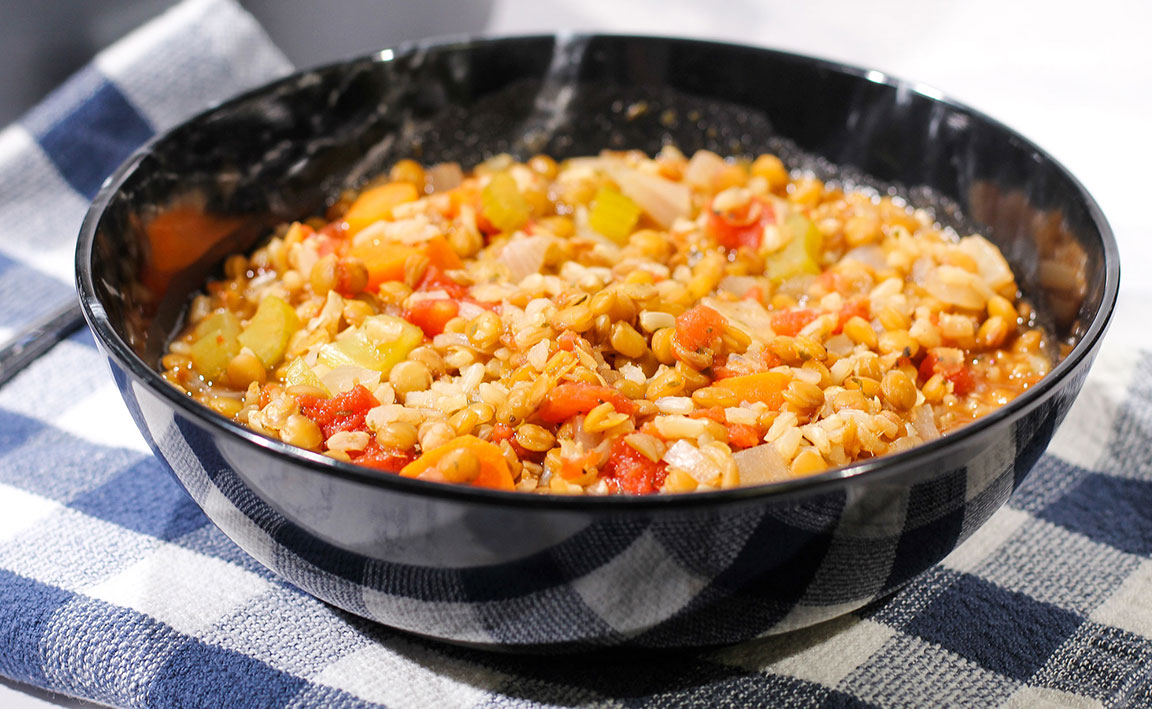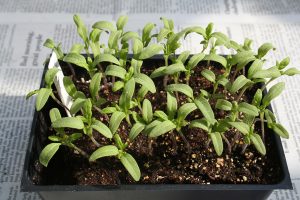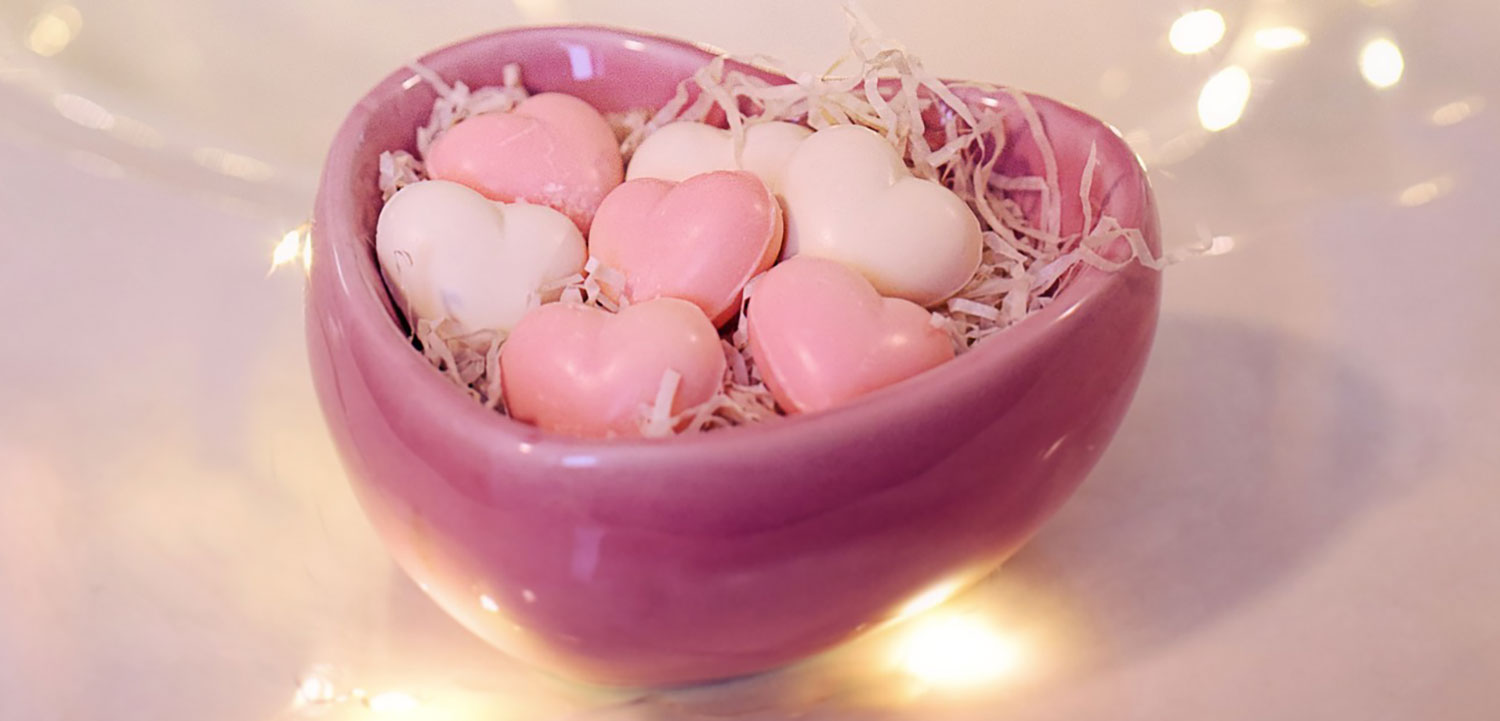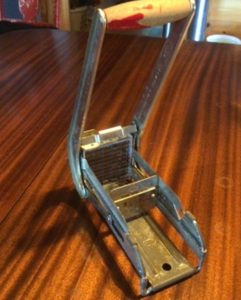
Maine Extension Homemakers Newsletter, Winter 2022
Table of Contents
- Presidential Ponderings from Bea LaPlante
- Around the State
- Officers Needed
- University of Maine COVID 19 Updates
- Remember This?
- Mark Your Calendar!
- Seasonal Recipes for Cold Winter Nights
- Meet Your County Advisors
- Forcing Branches Indoors
- Indoor Plants Require Slightly Different Care in the Winter Months
- Safety of Frozen Foods After a Power Outage
- Think Spring! Start Seeds Indoors!
- Crafty Corner: Heart-Shaped Bath Bombs
- 2021 Annual Reports Are Due Soon!
- Enrollment Forms Are Still Being Accepted!
Presidential Ponderings from Bea LaPlante

To all our Homemakers, Happy New Year!
Hoping you all have gotten the COVID-19 shots and booster. We are looking forward to being able to hold an Advisory Board meeting on February 7 to sort out the past two years and do some planning for 2022/23. If anyone would like to run for a state officer, please let Lisa Fishman or myself know.
I’m looking forward to reading what your groups have done these past two years, so don’t forget to fill out your annual report forms!
Have a great fall,
Bea
Around the State
The Somerset County Extension Homemakers Advisory Board enjoyed a presentation from the Natural Resources Council of Maine which featured a slide show presentation on the types of public lands in Maine. Speaker Melanie Sturm joined the group for the short but informational presentation.
Aroostook County Extension Homemakers from the Caribou Homemakers group made vine wreaths that they distributed to realtors in the Central Aroostook area, in an effort to provide a wreath to new residents of the area and invite them to join one of the Extension clubs in the area.
The Franklin County Extension Homemakers decorated a tree for the annual Rotary Christmas Tree Auction using the theme “Santa’s Toyshop.” They are currently in the midst of their annual tissue drive to collect boxes of tissues to be distributed to all the schools in Franklin County, just in time for cold and flu season.
Androscoggin County will see a brand new club starting up, in partnership with Living Innovations, that will meet monthly for crafting. Extension Homemakers from Franklin, Oxford, and Cumberland Counties will volunteer to meet with the new club members to teach a craft and work on community service projects. This exciting opportunity provides new skills to adults who live with disabilities and require assistance.
Cumberland County Extension Homemakers are busy with mini-workshops (bread baking, cinnamon rolls, sewing, and canning. CCEH members are also planning to meet for casual luncheons as a way to stay connected.
Oxford County Extension Homemakers are meeting for luncheons around the county as a way to make connections again! The members have had a rough year with loss of clubs and members, but are feeling excited about new opportunities.
Officers Needed
The State Advisory Board of the Maine Extension Homemakers Council is seeking nominations for leadership positions in 2022.
If you have ever considered holding an officer position on the MEHC Board, this is the perfect time to make that dream a reality. The MEHC Board will need to replace its President, Vice President, Secretary, and Treasurer in 2022, which means we need YOU. Your County President and your County Advisor have application forms for you to fill out upon request.
University of Maine COVID 19 Updates
The University of Maine System adheres to guidance from the Maine Centers for Disease Control and the Office of the Governor of Maine regarding COVID 19. Extension offices are now open to the public, but face masks are required for entry into the building. Conference rooms are open to Extension staff and volunteers, though masks are required and social distancing is expected, regardless of vaccination status. Contact your local UMaine Extension county office to make arrangements. There is no expectation for social distancing or masks for outdoor gatherings.
Remember This?
In honor of National Women’s History Month, who can identify these influential women?
Readers last month were able to identify this antique tool as a French-fry cutter! Cutting uniform fries by hand is tedious work, but with this type of cutter, uniform French fries are easy to get.
Mark Your Calendar!
February 7, 2022: State Advisory Board Meeting. Snow date is February 9, 2022.
January is National Hot Tea, Oatmeal, and Soup month. Be sure to check out the soup recipes in this newsletter.
February is National Embroidery Month, National Heart Month, and National Pie Month, with National Cherry Pie Day on February 20.
March is National Nutrition Month and National Women’s History Month, plus March 2 is National Read Across America Day. A great book to read to kids is the story of Johnny Appleseed because March 11 is National Johnny Appleseed Day.
Seasonal Recipes for Cold Winter Nights
Recipes courtesy of University of Maine Cooperative Extension Expanded Food and Nutrition Education Program.
Butternut Squash Bisque
Serves: 6 | Serving size: 1 cup
Ingredients:
- 1 large butternut squash or 1 (20 oz.) bag frozen butternut squash
- ½ cup scallions, chopped
- 3 cups low-sodium vegetable or chicken broth
- 2 carrots, peeled and sliced
- 1 apple, chopped
- 1 potato, peeled and chopped
- 1 large onion, chopped
- 2 cloves garlic (or 1 tablespoon minced garlic)
- 1 teaspoon dried oregano
- ½ teaspoon dried rosemary
- 5 oz. evaporated milk
Directions:
- Wash, peel, seed, and coarsely chop the squash. Disregard this step if using frozen squash.
- In a 3-quart saucepan, combine scallions, squash, broth, carrots, apples, potatoes, onions, parsley, garlic, oregano, and rosemary. Cover and cook over medium heat until the vegetables are tender, about 30-minutes.
- Puree soup in a blender or use an immersion blender, working in batches.
- Stir in the milk, adding more if the bisque is too thick.
Hearty Lentil Soup
Serves: 12 | Serving Size: 1 cup
Ingredients:
- 5 cups vegetable or chicken broth
- 2 cups water
- 1½ cups lentils, picked over and rinsed
- 1 cup brown rice, uncooked
- 2 (15 ounce) cans diced tomatoes with liquid
- 3 carrots, peeled and sliced
- 1 large onion, chopped
- 1/2 cup celery (~2 large stalks), chopped
- 2 large garlic cloves, minced
- ½ teaspoon basil
- ½ teaspoon oregano
- ½ teaspoon thyme
- 1 tablespoon parsley
- 2 tablespoons cider vinegar
- 1/4 teaspoon salt
- 1/8 teaspoon pepper
Directions:
- In a large, heavy saucepan, combine all ingredients.
- Bring the soup to a boil, reduce the heat, cover and simmer the soup for 45 to 55 minutes or until lentils are tender. Stir occasionally.
- If necessary, thin the soup with additional hot broth or water.
Tip: If using fresh instead of dried herbs, triple the amounts listed.
For more healthy, easy-to-make recipes, see UMaine Extension’s tested Recipes.
Meet Your County Advisors
Angela Martin, Statewide support
angela.martin@maine.edu
Favorite Winter Activity: Staying inside where it’s warm!
Cathy Gray, York, Cumberland, and Oxford
cathy.gray@maine.edu
Favorite Winter Activity: Making Snow Ice Cream
Lisa Fishman, Aroostook, Franklin, Somerset and Hancock
lisa.fishman@maine.edu
Favorite Winter Activity: Snowshoeing

Forcing Branches Indoors
Enjoy early springtime blooms while you’re waiting for gardening season to get into full swing by forcing branches indoors. Apple and cherry are good choices for forcing. The closer to bloom time, the better your success. Gather branches and hammer the stem-ends for better water uptake. Soak the entire branches overnight in a bathtub and then place in a vase or bucket of water and wait for the show.
Forsythia is traditionally “forced” to produce early, indoor spring flowers, but did you realize you can do this with many trees and shrubs? Not only can you enjoy the bright splash of yellow from forsythia, but also pink flowers of a honeysuckle, the fragrant purple flowers from a lilac, and many more.
Learn more about forcing branches indoors from the University of New Hampshire Cooperative Extension.
For more timely gardening tips, see Maine Home Garden News, UMaine Extension’s online monthly newsletter bursting with information all home gardeners should know about. Subscribe to receive this newsletter in your inbox each month and learn all about what’s eating your garden, what tools are hot, what cookbooks will help you use up all that produce, and what the experts are saying across the nation about all things gardening!
Indoor Plants Require Slightly Different Care in the Winter Months

Most of our houseplants come from tropical and subtropical climates. They are well adapted to the warm conditions in our homes and offices. Because they evolved near the equator, they have adapted to similar day lengths throughout the year, which we maintain in our homes and offices through the use of artificial lights.
But problems may crop up when growing houseplants, and this can be very discouraging. The problems encountered are often attributed to disease or insect infestation. But oftentimes problems can be traced to the conditions in which the plants live.
More information:
- Bulletin #2611, Tips for Growing Houseplants in Maine: Caring for Houseplants in Maine
- Bulletin #2612, Growing Houseplants in Maine: Dealing with Houseplant Problems
- Bulletin #2613, Tips for Growing Houseplants in Maine: Controlling Insects and Disease in Houseplants
- Bulletin #2614, Tips for Growing Houseplants in Maine: Growing Houseplants Under Artificial Lights in Maine
- Bulletin #2615, Tips for Growing Houseplants in Maine: Creating New Plants from Old Plants
- Bulletin #2616, Tips for Growing Houseplants in Maine: FAQs About Houseplants in Maine
- Houseplant Winter Care Q&A: Horticulturist Emma Erler, UNH, answers real questions about winter care of houseplants
Can Tabs? Yes, Please!
Lois King, Chairperson for the can tabs project, has designated The Ronald McDonald House as the organization that will receive can tab donations from the Maine Extension Homemakers. She will have more information to share at the February Advisory Board meeting, so stay tuned, and keep collecting!
Safety of Frozen Foods After a Power Outage
Excerpted from Bulletin #9002, Safety of Frozen Foods During a Power Outage
Keep the Freezer Closed
With the freezer closed, foods usually will stay frozen at least a day, perhaps two or three days, depending on the quantity of insulation. Food in well-fitted, well-insulated four-cubic-foot home freezers will not begin to spoil in fewer than three days. In 12- to 36-cubic-foot freezers, food will not begin to spoil in fewer than five days, and may be all right for seven or eight days if the food is very cold.
Open the freezer only to take out the food, to move it to a cooler or to add dry ice. With the door closed, food in most unopened freezers will stay below 40 degrees F up to three days, even in the summer. Thawing rate depends on:
- the amount of food in the freezer (a full freezer stays cold longer than one half full);
- the kind of food (a freezer filled with meat stays cold longer than a freezer filled with baked goods);
- the temperature of the food (the colder the food, the longer it will stay frozen. Never put hot or warmed foods into the freezer since this will increase the temperature. Keep hot food covered, and throw it out if you don’t eat it within two hours. Meat should be kept above 140 degrees F);
- the freezer (a well-insulated freezer keeps food frozen longer than one with little insulation); and
- the size of freezer (the larger the freezer, the longer food stays frozen).
Use Emergency Measures
Cover the freezer with blankets, quilts, or crumpled newspaper. Do not cover the air vent openings. Use dry ice if it is available. (See section on Using Dry Ice.)
Use Caution if Food has Thawed
Partial thawing and re-freezing can ruin the quality of foods, like fruits, vegetables, and prepared foods. Red meats are affected less than many other foods. However, it may still be safe to eat.
You may safely re-freeze some foods if they still contain ice crystals or if they have been kept at 40 degrees F or below for no more than two days.
Follow these guidelines for completely thawed foods:
- Fruits. Re-freeze fruits if they taste and smell good. Fruit that is beginning to ferment is safe to eat, but will have an off-flavor. Use off-flavor fruit in cooking.
- Frozen dinners. Do not re-freeze frozen dinners that have thawed. Cook and eat thawed frozen foods and frozen dinners right away if they are still cold. If any foods are warm or smell bad, don’t eat them.
- Vegetables. Do not re-freeze thawed vegetables. Bacteria in these foods grow fast. Spoilage may begin before bad odors develop. Some spoilage may be very toxic. Re-freeze vegetables only if ice crystals remain throughout the package. But, when in doubt, throw them out.
- Meat and Poultry. Meat and poultry become unsafe to eat when they start to spoil. Examine each package of thawed meat or poultry. If odor is offensive or questionable or if the freezer temperature has exceeded 40 degrees F for two hours or longer, don’t use the meat. It may be dangerous! Discard all stuffed poultry. Cook thawed but unspoiled meat or poultry right away.
- Fish and shellfish. These spoil easily. Do not re-freeze unless there are ice crystals throughout the package. Seafood may be spoiled, even if it doesn’t smell bad.
- Ice cream. Do not re-freeze melted ice cream. Throw it out or eat it as a liquid before an off-flavor develops.
Think Spring! Start Seeds Indoors!
Excerpted from Bulletin #2751, Starting Seeds at Home

When you grow your own seedlings, you can get a jump on Maine’s short gardening season, and start enjoying flowers and harvesting vegetables four to six weeks earlier than if you had waited for the ground to warm up enough to sow the seeds outside.
Starting your own plants from seed also allows you to choose from the much broader array of varieties offered by seed catalogs. Commercial transplant sellers offer a more limited number of varieties for sale.
Using transplants instead of direct-seeding is especially important for plants that take a long time to mature or are sensitive to frost, such as tomatoes, peppers, eggplants, and melons. Some plants (mostly root crops) do not transplant well, or they mature quickly enough that starting seedlings indoors is not necessary. Vegetables that are typically direct-seeded in the garden include beans, beets, carrots, corn, peas, spinach, lettuce, turnips, and zucchini.
Use fresh seed from a reliable source. Use seeds saved from a previous year only if they have been stored in a cool, dry place. Properly stored vegetable seeds can remain viable for between two to six years, depending on the species. Store your seeds in their original packets in a sealed glass jar in the refrigerator.
Seeds may be planted in any clean, 2- to 3 1/2-inch deep container with adequate drainage holes. You can use containers made of plastic compressed peat, or wood, or recycled containers such as the cut-off bottoms of milk jugs. Using shallow trays or flats sold in garden supply stores saves space when you want to start a lot of a single type of seed. The seedlings will need to be separated and transplanted into individual containers as they grow. If you want only a small number of plants, skip this step and direct-seed into small individual pots. Containers that have been previously used for planting should be thoroughly cleaned and disinfected with a solution of one part chlorine bleach to nine parts water. This will help prevent disease.
Seeds should be germinated in a sterile, fine-textured soilless mix. Standard seed-starting mixes have a pH of about 6.2 and are typically composed of ingredients such as sphagnum peat moss, perlite, vermiculite. They may also contain composted bark, compost, or coconut coir. Some add small amounts of lime and fertilizer. Soilless mixes tend to be hydrophobic — they repel water — so mix warm water into the medium until it is uniformly moist, but not oversaturated. You can either buy a commercial seed-starting mix or prepare your own at home by buying the ingredients separately and mixing a custom blend. Soil from your garden is not recommended when germinating seeds or growing seedlings in containers — it may contain weed seeds or disease pathogens, and it tends to compact, dry out, and crust over quickly. Once seedlings have emerged and developed one or two sets of true leaves, you can transplant them into slightly larger individual containers or cells.
You can figure out when to plant your seeds based on how long the seedlings will take to become mature enough to transplant into the garden. Seedlings may take from 4 to 12 weeks; the amount of time will usually be indicated on the seed package. To determine when to start seeds indoors, count back from the average last spring frost date for your area. Last frost dates for most of Maine are in late May or early June.
Some seeds may need special treatment before they are ready for germination; be sure to check for instructions on the seed package. Since seeds vary widely in how well they germinate, plan to sow more than you will actually need.
Fill containers with moist growing medium and gently press seeds onto the surface. Some seeds are fussy about the amount of light they need to germinate; follow the package directions and cover accordingly. A general guideline is to cover each seed with a layer of growing medium that is one to two times as deep as the seed’s diameter. Label the container. To keep the growing medium moist while the seeds are germinating, cover your container with a clear plastic dome, with plastic wrap, or put it in a plastic bag.
Crafty Corner: Heart-Shaped Bath Bombs
Materials
- 1/2 cup baking soda
- 1/2 cup citric acid
- 1/4 cup cornstarch
- Pink food coloring (optional)
- 4-5 drops therapeutic grade peppermint essential oil (Use only therapeutic grade essential oils, non-therapeutic grade essential oils can cause skin irritation)
- 1/4 cup melted coconut oil
- Silicone heart mold
Directions
- In a large mixing bowl, combine your baking soda, citric acid, and cornstarch and mix well. well.
- Add a couple of drops of pink food coloring to your bowl and mix with your fingertips (the liquid will ball up in the dry mixture).
- Add your therapeutic grade essential oil drops and mix with your fingertips again.
- Heat your coconut oil in the microwave for about 20 seconds (be careful as coconut oil heats very fast).
- Add a little coconut oil at a time and mix it in with a fork.
- Once all of your coconut oil is added, your mixture should feel like damp sand.
- Start filling your silicone mold with the mixture, making sure to press it firmly into the molds.
- Let dry overnight, then turn your mold upside down and carefully pop the heart bath bombs out.
To Use
Place one of your heart-shaped bath bombs in the bottom of your shower or in your warm bathtub to release your bath bomb. Avoid rubbing your eyes during and directly after use.

2021 Annual Reports Are Due Soon!
Club Annual Reports must be compiled and submitted to your County President by March 15.
County Presidents, please take your County Report to the Extension office. Send one copy to Angela Martin, maintain one copy of the report in the Extension office, and keep one copy for your own records, by March 31.
Lisa will work with MEHC President Bea LaPlante to compile a state-wide Annual Report by April 30.
Enrollment Forms Are Still Being Accepted!
As of the beginning of December, many counties still had not sent in their individual member enrollment forms, their calendars for 2022, or their lists of deceased members. Packets of forms were mailed to County Presidents to distribute to each local club president. Once all the forms have been completed, they need to go back to the County President, who will take them to the Extension office to be copied and mailed to Angela Martin in the Orono office. From there, Angela can put together the State MEHC Directory for 2022. Please get your information to the Extension office as soon as you can. Thank you!

Information in this publication is provided purely for educational purposes. No responsibility is assumed for any problems associated with the use of products or services mentioned. No endorsement of products or companies is intended, nor is criticism of unnamed products or companies implied.
© 2022
Call 800.287.0274 (in Maine), or 207.581.3188, for information on publications and program offerings from University of Maine Cooperative Extension, or visit extension.umaine.edu.
The University of Maine is an EEO/AA employer, and does not discriminate on the grounds of race, color, religion, sex, sexual orientation, transgender status, gender expression, national origin, citizenship status, age, disability, genetic information or veteran’s status in employment, education, and all other programs and activities. The following person has been designated to handle inquiries regarding non-discrimination policies: Director of Equal Opportunity, 101 North Stevens Hall, University of Maine, Orono, ME 04469-5754, 207.581.1226, TTY 711 (Maine Relay System).




